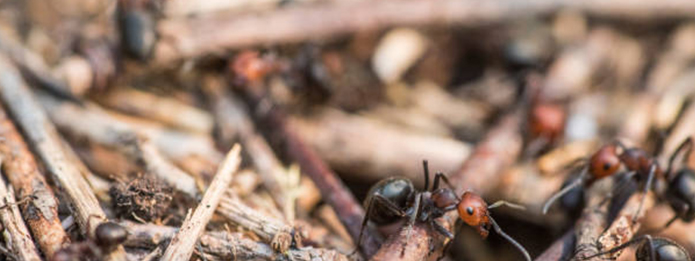What You Need To Know About Carpenter Ant Colonies

Carpenter ants are relatively common, yet their population is increasing throughout the Niagara area. However, just because they are common doesn’t mean you want them to establish their colonies near or in your home or business. It’s essential to take steps to remedy the situation should you notice carpenter or signs of their colonies nearby as they can damage buildings. Once they are removed, it’s also important to make the area less suitable for their needs.
To better understand carpenter ants, identify their colonies, and manage their population, make sure to read our guide below.
Understanding Carpenter Ant Basics
Carpenter ants are known for establishing their colonies in hollowed-out wood. They don’t eat wood, but they will reside in areas where termites have already feasted on the trees or lumber. In fact, the presence of carpenter ants inside a building is an indication that there is also excess moisture or rotting wood.
These ants eat a diverse diet that ranges from fresh fruits to plant-sucking insects to disposed of meat and grease. They tend to search for food at night, walking in straight lines along garden edges, fences, or any other linear object. This helps guide the ants to new food sources, including inside your home, then back to the colony.
Identifying Carpenter Ants
Compared to other ant species, carpenter ants are comparatively large. Full-grown ants can range anywhere from ¼-inch to just over ½-inch in length, while the kings and queens of their kind can end up close to ¾ of an inch long.
Color-wise, carpenter ants are usually some combination of red, black, orange, and yellow. Reproductive carpenter ants (kings and queens) are winged and can look like termites. The main visual difference between the winged carpenter ants and termites is the antennae. Carpenter ants have antennae that bent in the middle at nearly right angles. Termites have straight antennae.
Finding Carpenter Ant Colonies
Colonies tend to start small with only small population increases over the first two to three years. They then explode in number with a single colony containing 3,000 or more ants within four to six years of the colony’s creation.
They also create interconnected satellite colonies that contain workers, mature larvae, and pupae. Parent colonies, however, house the source of their queen as well as a variety of workers.
Carpenter ants like their environment to remain at a consistent temperature and humidity. This means they often seek moist environments, such as the rotting wood you may find in windows, door frames, chimneys, or sinks.
It can be difficult to find carpenter ant colonies without seeing carpenter ants return to their home. However, if you suspect that certain wood surfaces may contain their colony, you can try knocking on it. If you hear a hollow sound, it’s, at the very least, an indication that the wood is damaged and could serve as a potential home.
Preventing Carpenter Ant Infestations
To prevent potential infestations, you should take steps to remove rotting wood and remedy potential moisture issues within the building, such as leaks or drainage issues. You should also keep firewood away from your house and remove any wood debris. Finally, you can also cut back any branches or tree limbs that touch your home, as carpenter ants may use them as a pathway inside.
If you’re already dealing with an infestation, you should call professional pest control experts like those at Truly Nolen. We can inspect the area, assess the situation, and use effective treatments and processes to eliminate the colony. We’ll also work with you to identify how they made their way into your home and develop a prevention plan that works best for your needs.
Carpenter Ant Pest Control
Truly Nolen is here for all of your pest control needs. Reach out to us today to schedule an inspection.